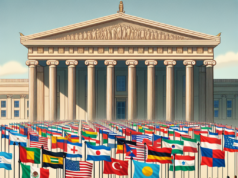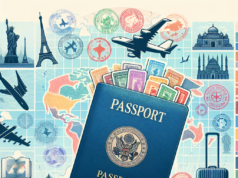In recent years, the plight of asylum seekers has emerged as a pressing global issue, drawing attention from governments, humanitarian organizations, and the media alike. As conflicts, persecution, and climate change continue to displace millions, the realities faced by those seeking refuge have become increasingly dire. This article aims to unveil the crisis surrounding asylum seekers today, exploring the current landscape, the impact of political decisions, humanitarian challenges, media representation, the role of international organizations, and future prospects for those in search of safety.
Understanding the Current Landscape of Asylum Seekers: A Global Overview
The global landscape of asylum seekers is marked by unprecedented numbers, with the United Nations High Commissioner for Refugees (UNHCR) reporting that over 26 million individuals were forcibly displaced by conflict and persecution as of 2023. This figure includes a significant number of asylum seekers who have fled their home countries in search of safety and stability. Regions such as the Middle East, Africa, and Central America are particularly affected, with ongoing conflicts, human rights abuses, and economic instability driving people to seek refuge in more stable nations. The COVID-19 pandemic has further complicated the situation, leading to border closures and increased restrictions, which have left many asylum seekers stranded in precarious conditions. As countries grapple with their own domestic challenges, the international community faces a critical juncture in addressing the needs and rights of these vulnerable populations.
The Impact of Political Decisions on Asylum Seeker Rights and Protections
Political decisions play a pivotal role in shaping the rights and protections afforded to asylum seekers. In recent years, many countries have adopted increasingly restrictive immigration policies, often citing national security concerns and economic pressures. These policies have resulted in the implementation of measures such as expedited deportations, limited access to legal assistance, and the establishment of detention centers that often lack adequate resources. In some instances, governments have sought to externalize their asylum processes, outsourcing the responsibility to third countries that may not uphold international human rights standards. Such political maneuvers not only undermine the rights of asylum seekers but also contribute to a climate of fear and uncertainty, making it more challenging for individuals to navigate the asylum process and secure the protection they desperately need.
Humanitarian Challenges: Living Conditions Faced by Asylum Seekers Today
The living conditions faced by asylum seekers today are often dire, characterized by overcrowded shelters, inadequate access to healthcare, and limited opportunities for employment. Many asylum seekers find themselves in temporary accommodations that lack basic amenities, leading to a deterioration of mental and physical health. In refugee camps, where resources are stretched thin, individuals may face food shortages, unsanitary conditions, and a lack of privacy. Furthermore, the psychological toll of displacement, compounded by the trauma of their experiences, can lead to long-term mental health issues. Asylum seekers often encounter bureaucratic hurdles that delay their applications, leaving them in limbo for extended periods. This uncertainty exacerbates their vulnerability, making it imperative for governments and humanitarian organizations to prioritize the provision of essential services and support systems to improve their living conditions.
Media Representation: How Asylum Seekers Are Portrayed in News Coverage
Media representation of asylum seekers plays a crucial role in shaping public perception and influencing policy decisions. Unfortunately, coverage often leans towards sensationalism, focusing on negative stereotypes and framing asylum seekers as a burden on society. This portrayal can perpetuate xenophobia and stigmatization, overshadowing the complex realities of their journeys and the contributions they can make to host communities. While some media outlets strive to present balanced narratives that highlight the resilience and agency of asylum seekers, the overall discourse remains fraught with bias. The challenge lies in fostering a more nuanced understanding of the issues at hand, emphasizing the human rights of asylum seekers and the moral imperative to provide them with protection and support. Responsible journalism can play a transformative role in advocating for policy changes and fostering empathy among the public.
The Role of International Organizations in Addressing Asylum Seeker Crises
International organizations, such as the UNHCR and various non-governmental organizations (NGOs), play a vital role in addressing the crises faced by asylum seekers. These entities work tirelessly to provide humanitarian assistance, legal support, and advocacy for the rights of displaced individuals. They facilitate access to essential services, including healthcare, education, and psychosocial support, while also engaging in efforts to influence policy at national and international levels. Additionally, international organizations often collaborate with host countries to develop comprehensive strategies that address the root causes of displacement and promote sustainable solutions. However, their efforts are frequently hampered by funding shortfalls and political resistance, underscoring the need for greater international solidarity and commitment to protecting the rights of asylum seekers.
Future Prospects: What Lies Ahead for Asylum Seekers in a Changing World
As the world continues to grapple with the complexities of displacement, the future prospects for asylum seekers remain uncertain. Climate change, ongoing conflicts, and economic instability are likely to exacerbate the challenges faced by vulnerable populations, leading to increased migration pressures. However, there is also potential for positive change, as awareness of the plight of asylum seekers grows and advocacy efforts gain momentum. The global community must prioritize the establishment of fair and humane asylum processes, ensuring that the rights of individuals seeking refuge are upheld. Collaborative approaches that involve governments, civil society, and international organizations will be essential in creating sustainable solutions that address the root causes of displacement while providing protection and support for those in need. Ultimately, the future of asylum seekers will depend on the collective will to foster a more compassionate and just world.
The crisis surrounding asylum seekers is a multifaceted issue that demands urgent attention and action from the global community. By understanding the current landscape, recognizing the impact of political decisions, addressing humanitarian challenges, promoting responsible media representation, and supporting the efforts of international organizations, we can work towards a future where the rights and dignity of asylum seekers are respected and upheld. As we navigate this complex terrain, it is imperative to remember that behind the statistics are individuals with hopes, dreams, and the fundamental right to seek safety and security.




























